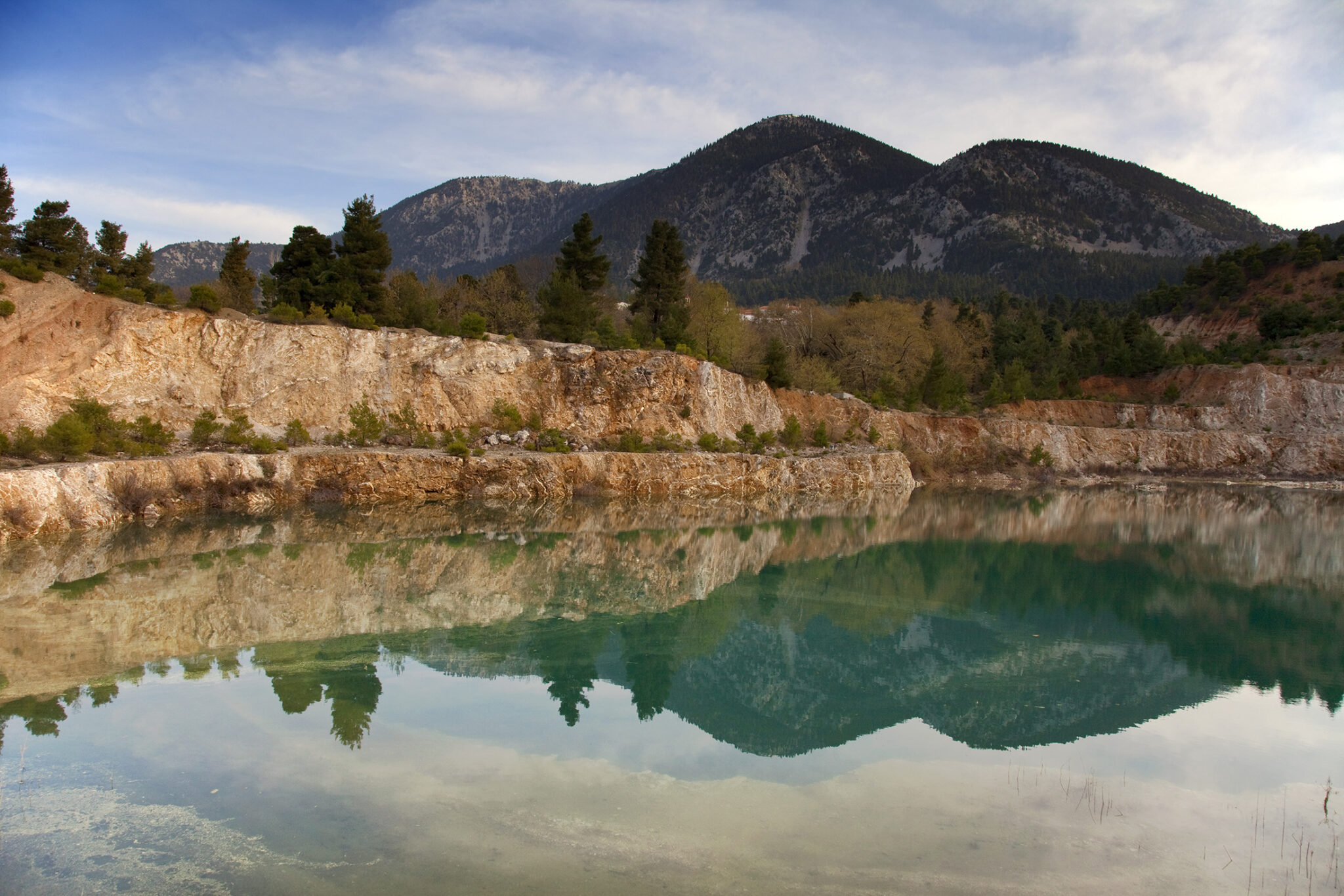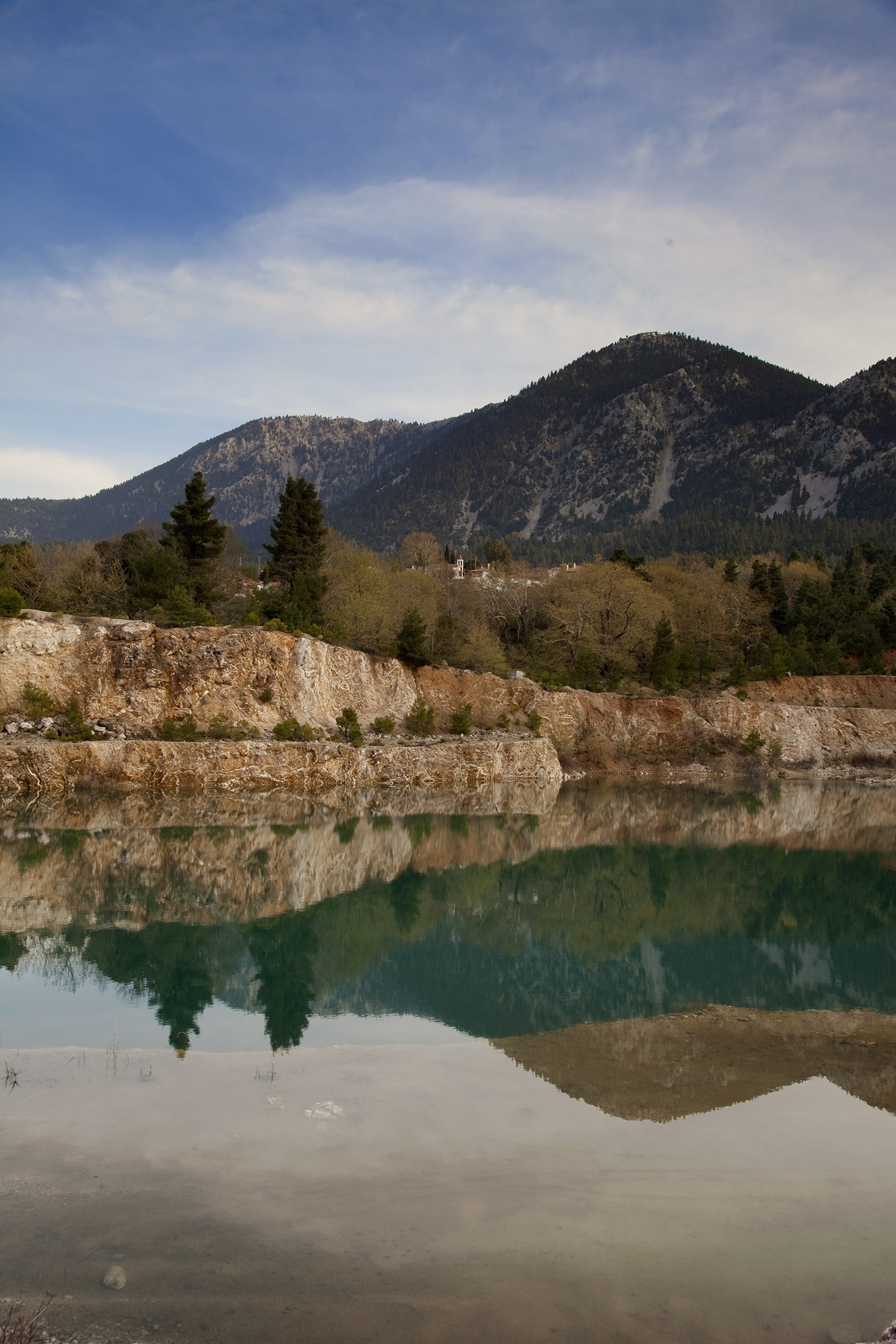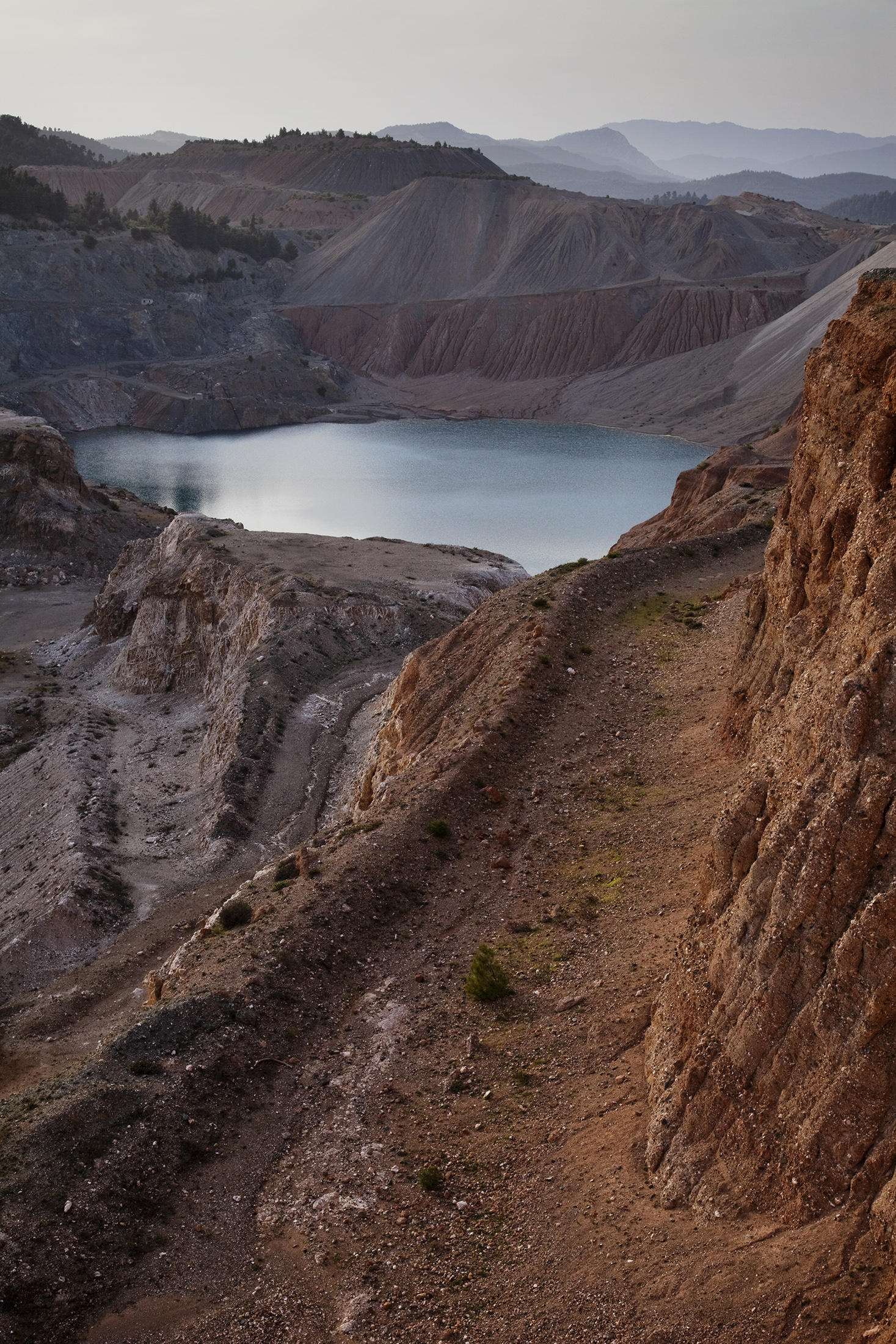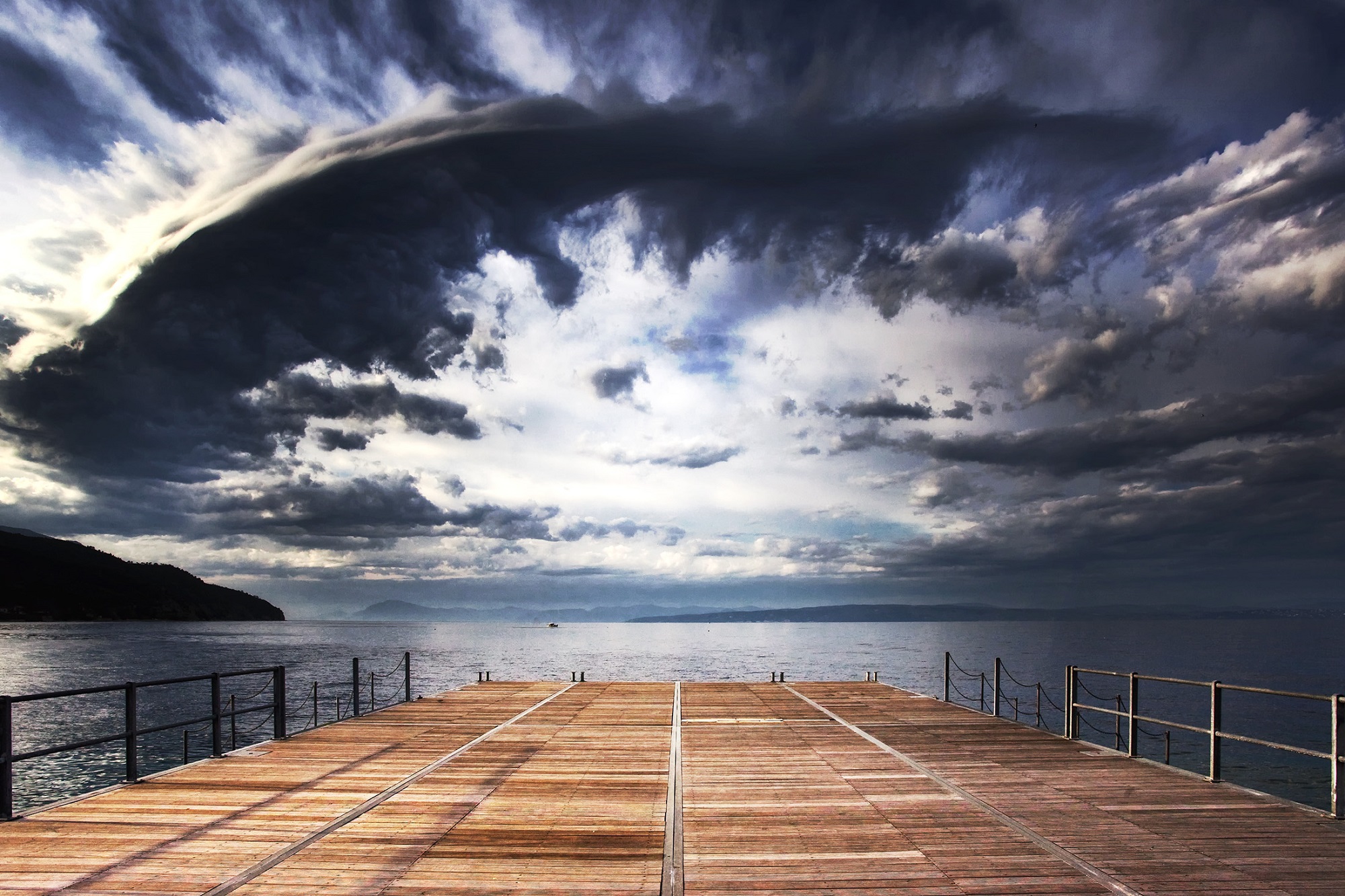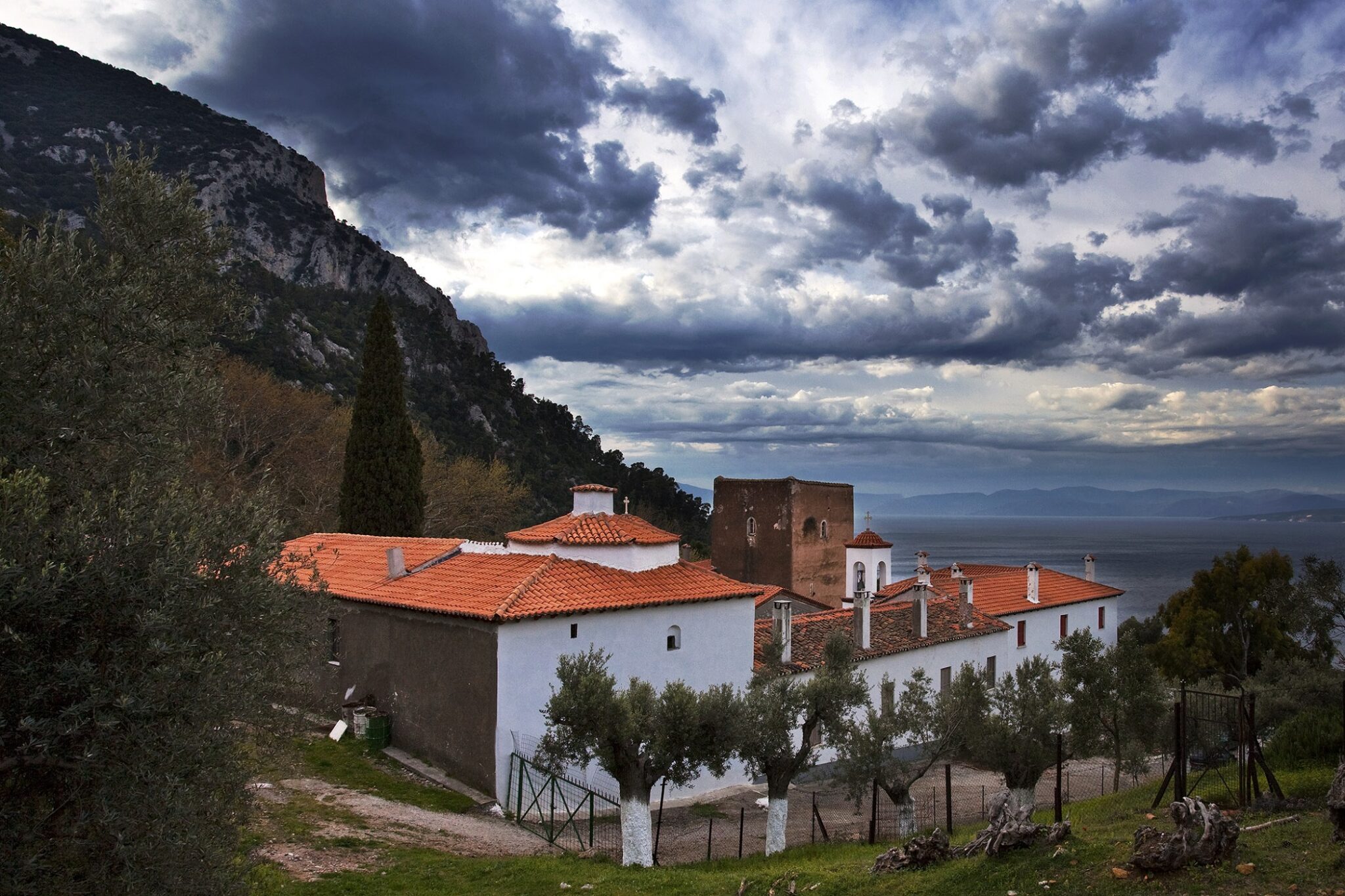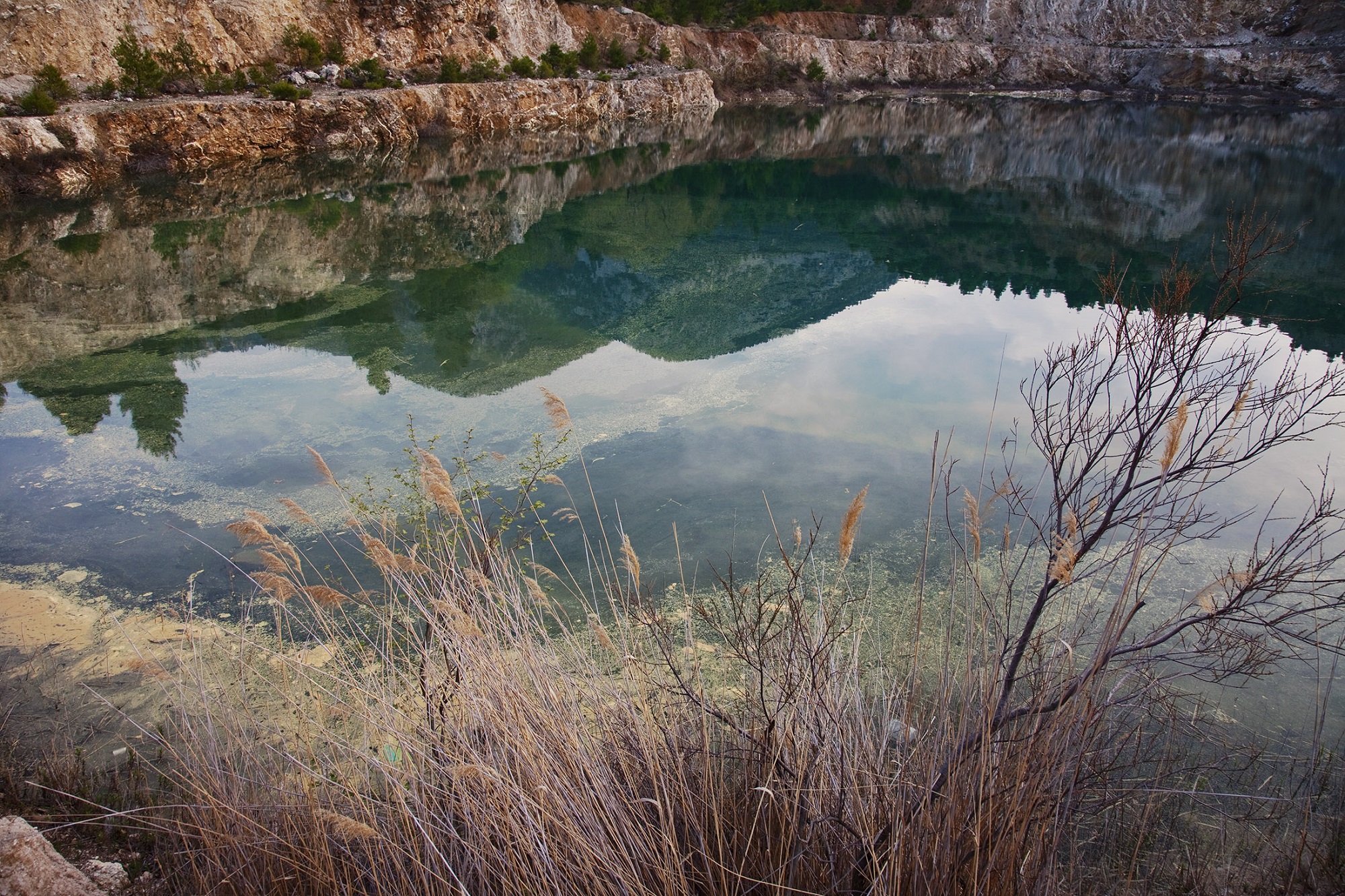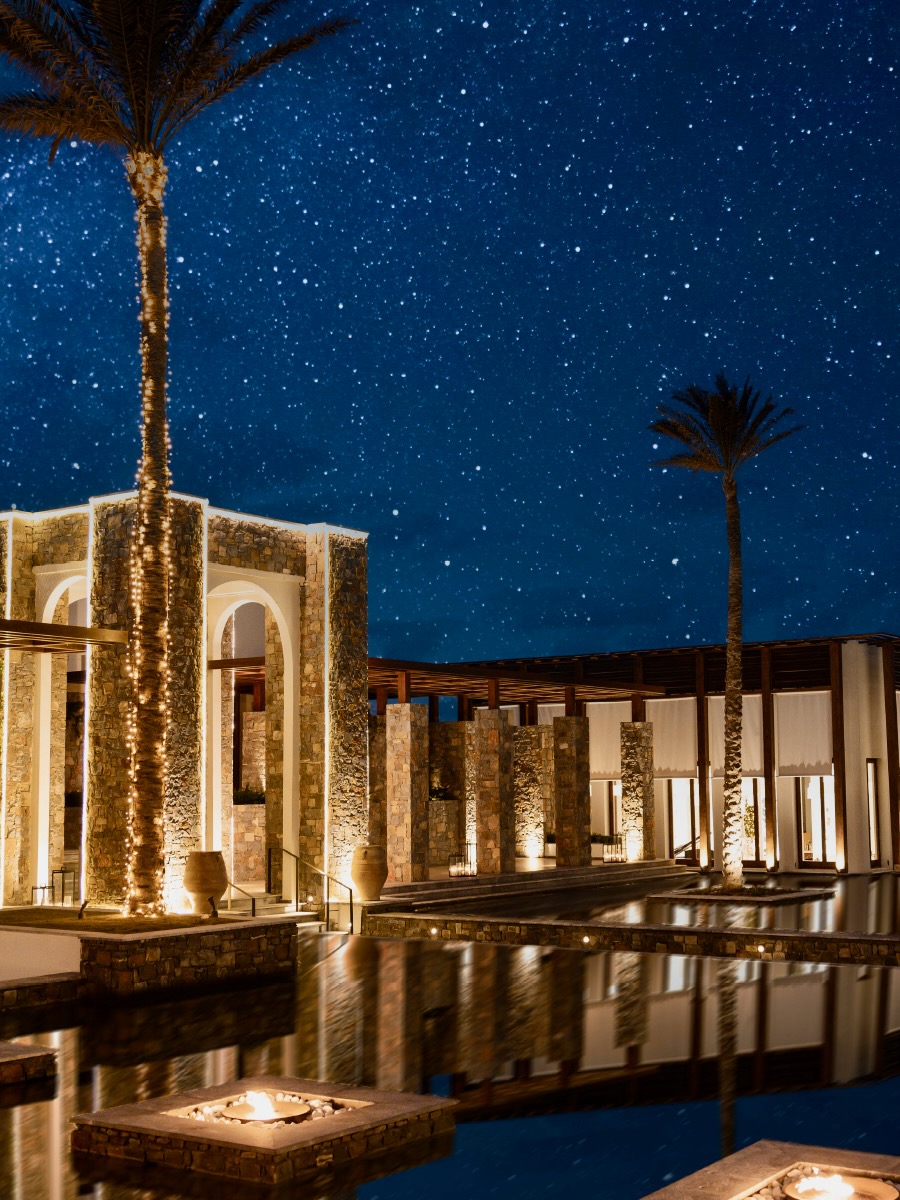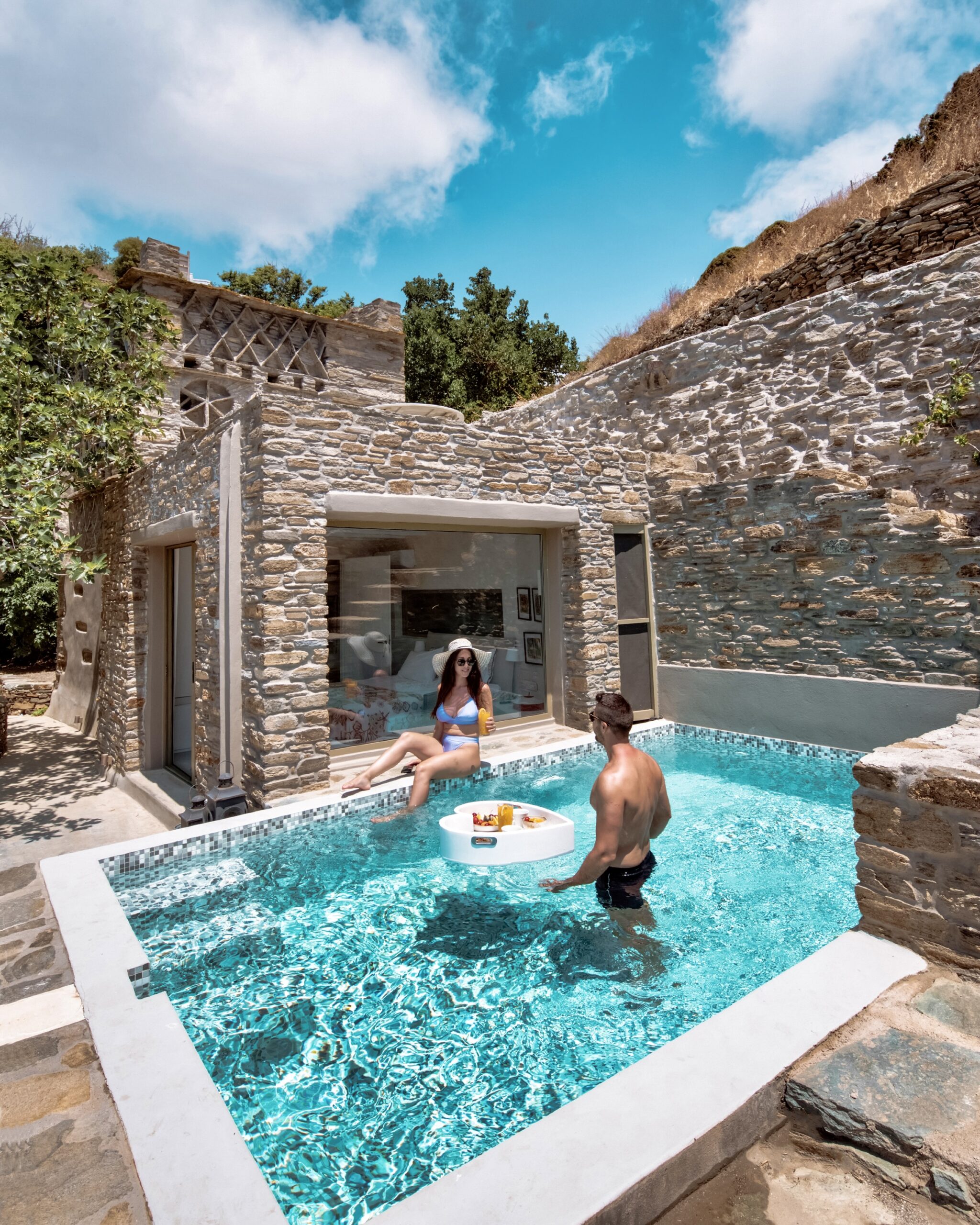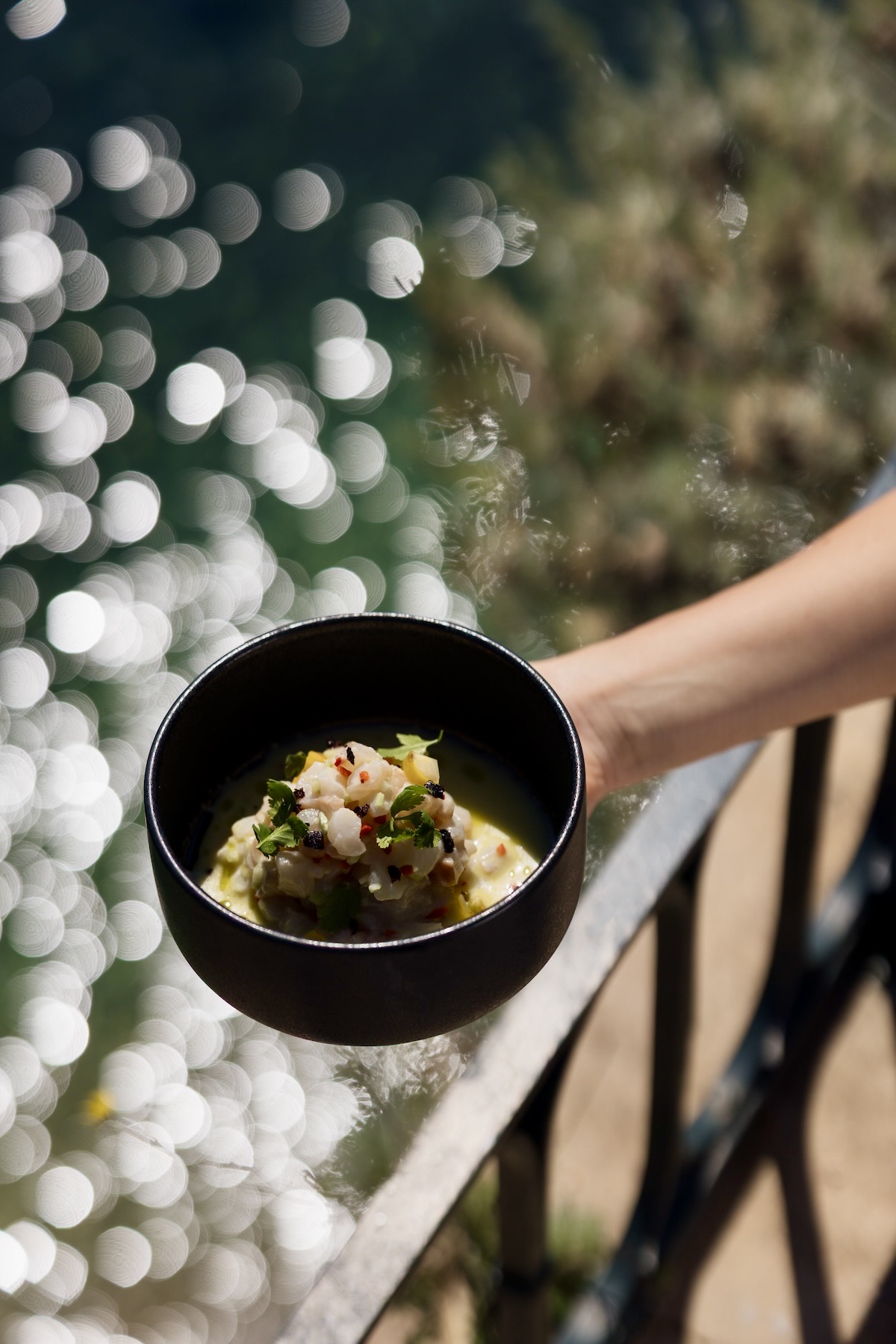It never ceases to amaze how Nature can and does regenerate and heal ‘scars’ left by human activity. As is apparent here if left to her own devices nature soon recreates whole ecosystems from scratch, as the jungle swallowed up Siem Reap and Palenque, the desert blanketed Palmyra.
This has also happened in northern Evia, in a special place, which remains a beautiful little secret unbeknown to most visitors who come to the island. To the locals and those who have discovered it, the place is known quite aptly as “Mining Lakes” – a name that describes what was and now what is.
The Mining Lakes are closely linked with the history of the town of Mandoudi, northern Evia, with 1,787 inhabitants at last count. Around the end of the 19th century the region experienced sharp economic growth due to the mining and processing magnesium carbonate (MgCO₃). The local deposit was, in fact, considered one of the two or three most abundant in the whole of Greece.
By 1893, 13,000 tons of mineral magnesium carbonate was being produced, which was then shipped off to Europe and America and indeed during WW1 this mineral was important for the Allied forces. After over a century of immense profitability, at one time it was the most profitable private sector business in Greece, the company started to shrink owing to the depletion of the mineral in the area. Finally the mines were closed in 2001.
Even though mining activity would later restart on a more limited scale, the exhausted old mines were ultimately abandoned, leaving behind an approximately 10,000 hectares mined, mountainous area which resembled a desolate pock-marked moonscape, filled with huge potholes and deep craters. It is here, over time, that the ecosystem began to regenerate and a network of 14 lakes of varying sizes, which then began to form, breathing fresh life into the area, as the forests began growing and wildlife was once again attracted by this new aqueous habitat.
As a result, a new, completely natural process created this new ecosystem, which also radically changed the physiognomy of the surrounding mountain landscape: Many who have ‘discovered’ the region say that it resembles scenery from the Alps.There are oleanders, wild reeds, pines and plane trees, while the waters (or around them) are home to many species of birds, turtles and various fish.
Many of the lakes reach depths of up to 70 to 80 metres, which is no coincidence, since this is where the mineralization would stop and the water table would start, so the mining would obviously have to stop.
Apart from the lakes themselves, of course, another nearby attraction is worth pointing out, which is recommended to take a stroll by: The Moni Galataki, as it is known, Dedicated to St. Nicholas Galatakis, who according to local legend came here from Galata in Constantinople. Built on the edge of Mount Kandili, on a plateau that is only a short distance from the shores of the gulf of Evia. The monastery was founded around the 8th century, which makes it the oldest of its kind in Evia. The frescoes in the church are also famous. They were completed in 1567.
Getting to the Mining Lakes from Athens
It only takes a couple of hours to reach the Mineral Lakes from the capital by road. After crossing the bridge at the narrow straits at Chalkida (1hr), you head north, towards Mantoudi, which is a mere 58 km from there.
The area of the lakes covers a wapping 1,000 hectares and is divided into two sections. One part is located between Mandoudi and the village of Prokopi, at the location known as ‘Paraskevorema’. Whilst the second section is located on the slopes of Mount Kandili, between Dafnona, Troupi, Kakavo, Spathari and Kalyvia.
Read More
Getting to Know some of the Amazing Herbs of Evia, Greece
Leisurely strolls, Lengthy Coffees and Fresh Fish in Chalkida, Evia
Trekking at Steni, central Evia, features impressive forestland



